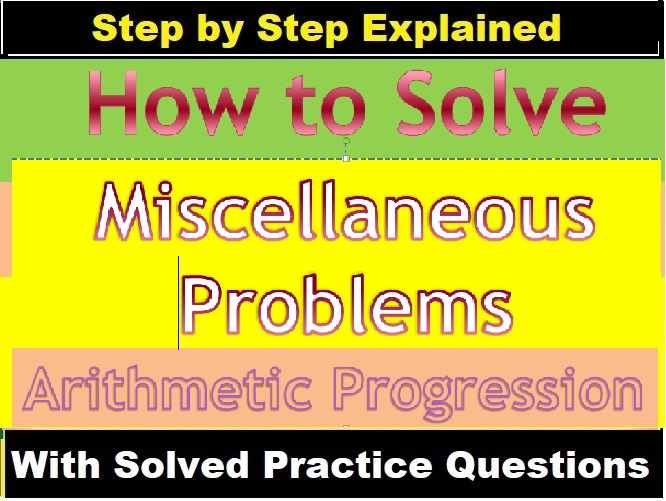Human Respiratory System Class-6 Srijan ICSE Biology Solutions Chapter-5 Veer Bala Rastogi Srijan Publishers Solutions. We Provide Step by Step Solutions of Fill in the blanks, Give functions, Define the following, Differentiate between the following, Match the following, True and False, MCQs and Answer these Questions of Veer Bala Rastogi Srijan Biology Publishers. Visit official Website CISCE for detail information about ICSE Board Class-6.
Human Respiratory System Class-6 Srijan ICSE Biology Solutions Chapter-5
| Board | ICSE |
| Class | 6th |
| Subject | Biology |
| Book Name | Srijan |
| Chapter-5 | Human Respiratory System |
| Unit-1 | Human Respiratory System |
| Topic | Solution of exercise questions |
| Session | 2023-24 |
Human Respiratory System ICSE Class-6th Srijan
Biology Solutions Chapter-5
A. Fill in the blanks with suitable words:
1. Cellular respiration occurs inside cells.
2. During inhalation, ribs move up and outward.
3. End products of respiration are Carbon dioxide, water and energy.
4. Breathing involves two steps inhalation and exhalation.
5. Opening of larynx in the pharynx is protected by the epiglottis.
B. Give one word for the following:
Question: 1. Air sacs inside the lungs.
Answer: Alveoli
Question: 2. The muscular partition that separates thoracic cavity and abdominal cavity.
Answer: The diaphragm
Question: 3. The gas which turns limewater milky.
Answer: Carbon dioxide
Question: 4. The temporary compound formed by hemoglobin with oxygen.
Answer: Oxyhemoglobin
Question: 5. The structures that help in breathing
Answer: The diaphragm
Question: 6. Substance broken down during respiration to release energy.
Answer: Carbon dioxide
C. Mention the role of the following:
Question: 1. Nasal passages
Answer: The nasal cavity functions to allow air to enter the respiratory system upon respiration.
Question: 2. Alveoli of lungs
Answer: The exchange of oxygen and carbon dioxide takes place in the alveoli of the lungs.
Question: 3. Ribs in breathing
Answer: The ribs protect the lungs and expand as we inhale to facilitate space for the lungs to expand like the diaphragm.
Question: 4. Hemoglobin
Answer: Allows it to pick up oxygen from the air we breathe and deliver it everywhere in the body.
Question: 5. Epiglottis
Answer: The epiglottis is usually upright at rest allowing air to pass into the larynx and lungs.
D. Differentiate between the following:
Question: 1. Breathing and respiration
Answer:
| Breathing | Respiration |
| 1. Breathing takes place inside the respiratory structure like the lungs. | 1. Respiration takes place inside every cell of the body. |
| 2. Breathing is a physical process that can be controlled both voluntarily and involuntarily. | 2. Respiration occurs inside the cell in the presence of respiratory gasses and hence it is involuntary. |
| 3. The gases after breathing enters the blood through the alveoli. | 3. The gasses enter the cell from the blood as it carries the gasses towards the tissues. |
| 4. The process requires the use of ATP. | 4. ATP here is produced from the nutrients in the cell. |
Question: 2. External and internal respiration
Answer:
| External Respiration | Internal Respiration |
| 1. It refers to oxidation of the glucose and the generation of the energy. | 1. It refers to the exchange of gases between the air, the alveoli and the blood. |
| 2. It occurs via nostrils, nasal cavity, bronchus, bronchioles and alveoli. | 2. It occurs at the individual cellular level. |
| 3. It is just a physical process in which air moves inside and outside of the body. | 3. It is a biochemical process, involving the oxidation of glucose to generate ATPs. |
| 4. In this process, Oxygen moves inside the lungs and carbon dioxide is exhaled out. | 4. In this process, glucose undergoes oxidation to generate ATP, Carbon dioxide and water. |
Question: 3. Exhalation and inhalation
Answer:
| Exhalation | Inhalation |
| 1. It is the process of exhaling air containing carbon dioxide. | 1. It is the process of inhaling air containing oxygen. |
| 2. During this process, the size of chest cavity will be decreased. | 2. During this process, the size of chest cavity will be increased. |
| 3. As the chest cavity decreases, the air pressure inside will be more. | 3. As the chest cavity increases, the air pressure inside will be less. |
| 4. Air moves out from the lungs. | 4. Air from outside runs into the lungs |
| 5. Diaphragm relaxes and becomes done shaped. | 5. Diaphragm contacts and flattens. |
E. Answer these questions:
Question: 1. Explain the mechanism of breathing in human beings.
Answer: Mechanism of breathing in human beings:
- Inhalation:
- During inhalation process, the diaphragm contracts and moves down. The ribcage moves upwards and outwards and expands.
- This results in increasing the volume of the chest cavity and reduces the pressure inside it as volume is inversely proportional to pressure.
- When the pressure inside the lungs reduces then the air from outside rushes into the lungs.
- Exhalation:
- During exhalation process, the diaphragm relaxes as it moves up and returns to its normal dome shape. The ribcage also returns to its normal position.
- This reduces the volume of the chest cavity, which in turn increases the pressure inside it. And thus air is expelled out.
In this way, process of breathing takes place in human beings.
Question: 2. How does exchange of gases take place in human body?
Answer: Process of respiration in humans:
- Respiration is the process of taking in oxygen and expelling out carbon dioxide.
- Respiration in humans occurs in three phases – External, internal and cellular respiration.
External respiration:
- External respiration refers to the exchange of gasses – oxygen and carbon dioxide, which occurs between the air and blood in the alveoli of the lungs.
- During the external respiration, oxygen binds to haemoglobin in alveoli forming a temporary compound called oxyhaemoglobin and gets transported to various parts of the body.
Internal respiration:
- Internal respiration is the process of gaseous exchange between blood and body cells.
- During this process, oxygen enters the cells from the blood, whereas carbon dioxide enters the blood from the cells.
Cellular respiration:
- Cellular respiration is the process by which oxygen entering the cell is used to break down glucose to release carbon dioxide, water vapor and energy.
Question: 3. With the help of an experiment, prove that the exhaled air contains carbon dioxide.
Answer: Aim: To prove that exhaled air contains carbon dioxide.
Materials Required: tape, two beakers, limewater, cardboard and straw
Procedure:
- Take two beakers A and B containing equal volumes of lime water.
- Cover both beakers with cardboard using tape and make holes in them for straw.
- Blow air in beaker B with the help of a straw while leaving the beaker A undisturbed.
Observation:
- Lime Water in beaker B first turns milky.
- Lime Water in beaker A does not turn milky
Inference:
- When air is blown in beaker B, exhaled air contains carbon dioxide and hence, the lime water in beaker B turns milky as soon as we blow air into it.
- Lime water in beaker A remains the same as no carbon dioxide has entered it.
F. Give reasons for the following:
Question: 1. We need to breathe.
Answer: Breathing:
- The process of taking in air rich in oxygen and giving out air rich in carbon dioxide is called breathing.
- The process of taking in air that is rich in oxygen is called inhalation whereas the process of expelling out air that is rich in carbon dioxide is known as exhalation.
- Breathing is the only way to get the oxygen required for various metabolic processes in the body.
- Hence, we need to breathe in order to survive.
Question: 2. Breathing rate increase during fast physical activities.
Answer:
- When heavy exercise is being performed, the demand for energy is very high but the supply of oxygen to produce energy is limited.
- Anaerobic respiration takes place in the muscle cells to meet the demand for energy.
- Thus during heavy exercise more energy is required by muscle cells which work very hard.
- Hence after finishing the exercise, a person breathes faster and deeper so that more oxygen reaches the cells
Question: 3. We sneeze.
Answer: Reason for sneezing:
- Sneezing is caused due to irritation caused by particles blocking the nasal tract.
- The respiratory tract contains multiple ciliated cells that can trap the dust particles or pollen from entering.
- These components that block the respiratory passage are readily removed through sneezing as the particles cause irritation in the nose.
G. Match the columns:
| Column A | Column B |
| 1. Epiglottis | (a) Air sacs |
| 2. Pneumonia | (b) Tuberculosis |
| 3. BCG | (c) Trachea |
| 4. Alveoli | (d) Carbon dioxide |
| 5. Exhalation | (e) Bacteria |
Answer:
| Column A | Column B |
| 1. Epiglottis | (a) Trachea |
| 2. Pneumonia | (b) Bacteria |
| 3. BCG | (c) Tuberculosis |
| 4. Alveoli | (d) Air sacs |
| 5. Exhalation | (e) Carbon dioxide |
H. State whether these statements are true or false. If false, rewrite the correct form of statements:
| Statements | True/False |
| 1. The air we breathe out is rich in oxygen and moisture. | F |
| 2. During fast running or heavy exercise, we breathe fast and irregularly. | T |
| 3. Trachea has a large surface area for gaseous exchange. | F |
I. Encircle the odd one out. Give reasons for your choice:
Question: 1. Thoracic cavity, abdominal cavity, diaphragm, ribcage
Answer: Odd one out: abdominal cavity
Give reasons: The abdominal cavity lies below the thoracic cavity. It is not part of the respiratory system.
Question: 2. Alveoli, lungs, skin, bronchi, bronchioles
Answer: Odd one out: skin
Give reasons: Skin is the largest organ of the body and is involved in the maintenance of body temperature. Skin is not part of the respiratory system and no gaseous exchange occurs through the skin in humans.
Question: 3. Ammonia, glucose, CO2 , lungs
Answer: Odd one out: Ammonia
Give reasons: Ammonia is a colorless, pungent gas which contains central nitrogen bonded with hydrogen atoms. Ammonia is not involved in the process of respiration.
J. Multiple Choice Questions:
1. During inhalation
(a) Diaphragm relaxes and rib muscles
(b) Diaphragm contracts and rib muscles relax
(c) Both diaphragm and rib muscles relax
(d) Both diaphragm and rib muscles contract
Answer: option (b) Diaphragm contracts and rib muscles relax is correct.
2. Exhaled air contains more
(a) Oxygen
(b) Carbon dioxide
(c) Nitrogen
(d) Oxygen and nitrogen
Answer: option (b) Carbon dioxide is correct.
3. The breathing rate in humans under normal conditions is
(a) 16 – 18 times
(b) 20 – 25 times
(c) 39 – 32 times
(d) 18 – 20 times
Answer: option (a) 16 – 18 times is correct.
4. The process of gaseous exchange in lungs between air and blood is called
(a) Respiration
(b) Transpiration
(c) External respiration
(d) Internal respiration
Answer: option (c) External respiration is correct.
K. Diagram – based questions:
Question: 1. Draw and label a diagram of the human respiratory organs.
Answer:

Question: 2. With the help of a diagram show the respiratory process in humans.
Answer: Process of respiration in humans:
- Respiration is the process of taking in oxygen and expelling out carbon dioxide.
- Respiration in humans occurs in three phases – External, internal and cellular respiration.
External respiration:
- External respiration refers to the exchange of gasses – oxygen and carbon dioxide, which occurs between the air and blood in the alveoli of the lungs.
- During the external respiration, oxygen binds to haemoglobin in alveoli forming a temporary compound called oxyhaemoglobin and gets transported to various parts of the body.
Internal respiration:
- Internal respiration is the process of gaseous exchange between blood and body cells.
- During this process, oxygen enters the cells from the blood, whereas carbon dioxide enters the blood from the cells
Cellular respiration:
- Cellular respiration is the process by which oxygen entering the cell is used to break down glucose to release carbon dioxide, water vapor and energy.
— : End of Human Respiratory System Class-6 Srijan ICSE Biology Solutions Chapter-5:–
Return to- ICSE Class -6 Srijan Biology Solutions
Thanks.
Please share with your friends if you find it useful.


